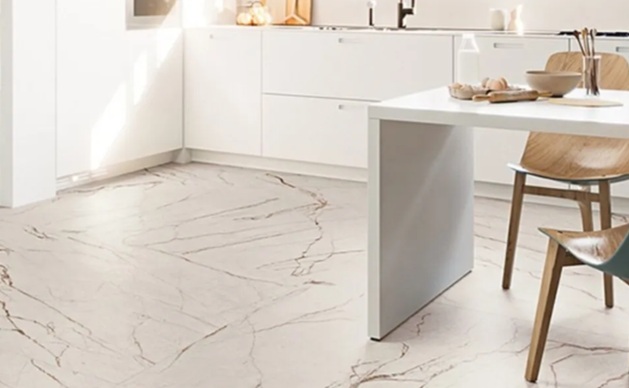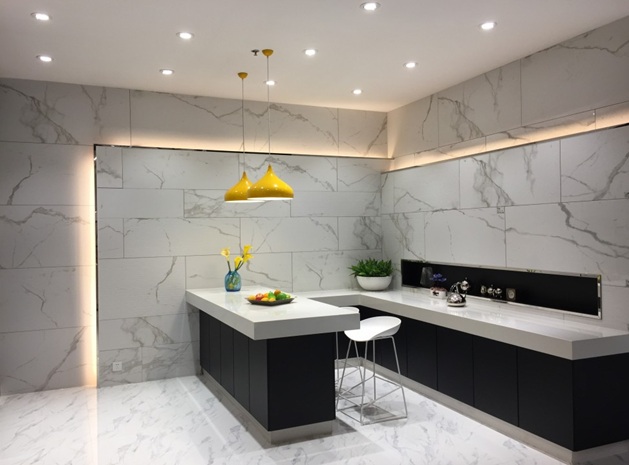There are plenty of options to consider when you want to make a change at home that would be as impactful as useful at the same time; however, few can compare to the versatility of porcelain material in the form of slabs. There are many reasons as to why you should make this choice for your next home renovation, and we’ve got some for you.
For one, porcelain is a material that goes through a thorough process to produce an incredibly dense slab that’s got amazing durability. As these are tiles that are made using high-temperature kilning, these are products that are also impact-resistant and scratch proof. This makes them a better option compared to other materials.
Is Porcelain Slab Better Than Granite?

Yes, the timeless porcelain slab makes for a better choice than the natural stone granite option. It’s gaining more and more popularity as of late even over alternatives like quartz and soapstone when we think of additional incredible properties such as heat resistance, resistance to warping and discolouration, and stain- and water-resistance too. So, besides long lifespan, you also get low maintenance. As most of us are pressed for time nowadays, who wouldn’t love a feature like that?!
To top it all off, porcelain is lighter which makes it easier to work with, and the slabs are available in an array of colours, patterns and finishes. This gives you all the flexibility you require to choose based on your taste, budget, as well as project; the porcelain slabs can be used in many ways, from floors to countertops in busy areas like the kitchen, high-traffic areas, or as a focal point in a bathroom renovation.
Prefer the idea of a wall backsplash? Feel free to come up with a nice wall feature in the shower, the hallway or living room as a standout ceiling element. Let your imagination be your guide. Some also incorporate porcelain with the fireplace setup, used as the surrounding detail. The possibilities are truly endless.
Tips On Shopping for Porcelain Slab

As there are plenty of porcelain slab options, and not all of them are equal, there are some considerations you’d have to have in mind to count on a hassle-free shopping. This includes our tips like:
Give The Project Some Thought
Where is it you intend to install the porcelain slab tiles? The answer to this would help guide you in the right direction among the myriad of choices. What’s great for bathrooms and kitchens isn’t that great for outdoor or commercial spaces. Then again, the feature you plan on adding them to, be it the floor, wall or countertop, additionally weighs in on the final decision.
For example, with floors or walls in rooms like the bathroom and kitchen, the focus should be on low-porosity and anti-slip properties in the form of grip or texture. When it comes to countertops, heat- and scratch-resistance are imperative. For outdoor areas where there’s exposure to weather elements, it’s essential to choose slabs that are strong on the UV-resistance as well as promise a lot on the frost-proof aspect.
For commercial areas where there’s a lot of wear and tear, higher durability and load-resistance are key. Opting for products from reputable manufacturers known for the quality and putting their slabs to the test to provide you with the best is a solution to keep in mind if you want to avoid headaches down the road.
While we’re at project too, you’d also have to decide on the installation; is it a DIY project or not? If it is, you’d best look for something easier to assemble, as it’s not that seamless and requires experience and the right tools for the job – especially the case with larger slabs.
Check the Slab Size and Thickness
The reason there are various options in terms of size and thickness stems from the fact each is made to suit a specific type of project which again leads us to the previous – project consideration. Smaller slabs that are also thinner are best reserved for spaces where they’d be put to light use (making them not so great as floor slabs) or serve as a nice backsplash on the wall.
For floors, look for the medium choices that are thicker and better used for high-traffic areas. Thicknesses can be as high as 20mm. Large tiles are ideal if you’re up for a more minimalist and modern aesthetic. As opposed to them, the small tiles are great if you prefer a more intricate and classic look.
Don’t Forget the Aesthetic Part
Colour, pattern and finish are equally important with your selection. To make the process easier, it’s best to consider the surrounding elements and look for slabs that go well with the aesthetic you already have in the space, whether it’s residential or commercial, indoor or outdoor. Some prefer more natural patterns that provide classic style and warmth, whereas others would like to experiment with something modern and sleek – so it’s up to you to decide on what suits you better.


